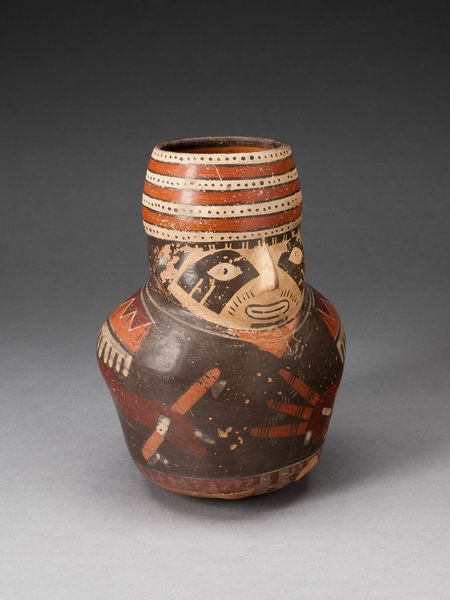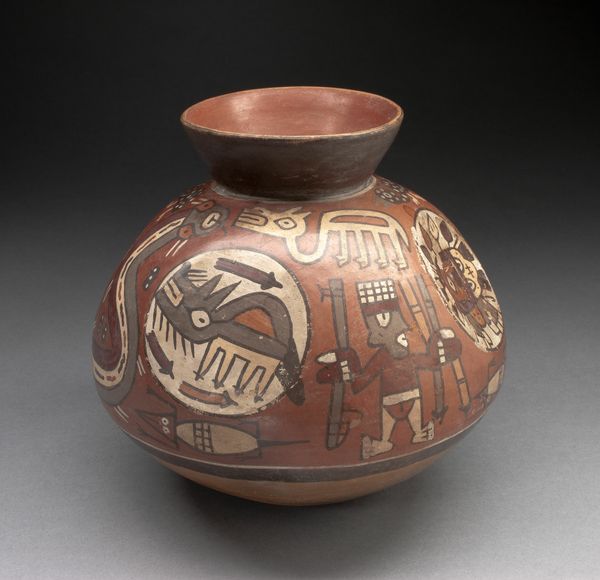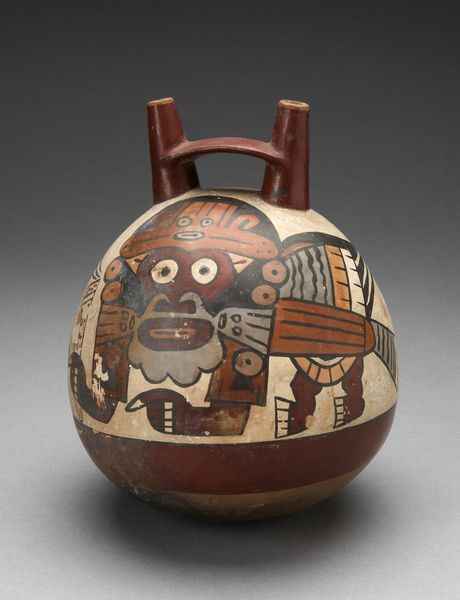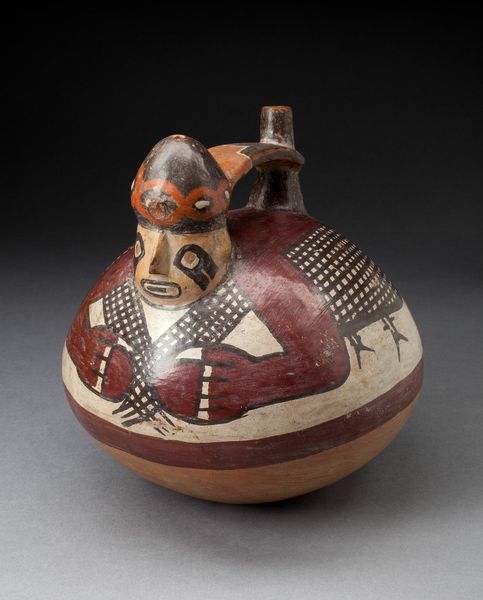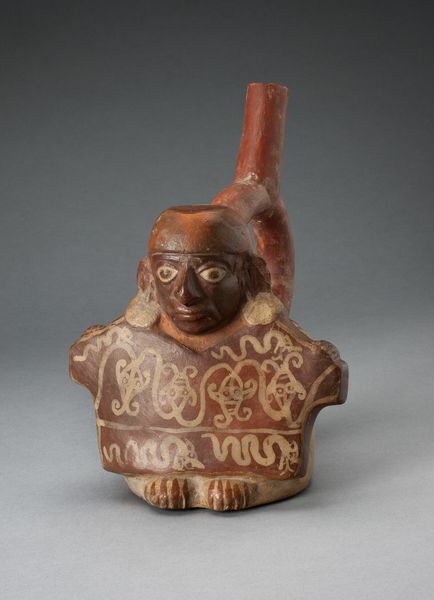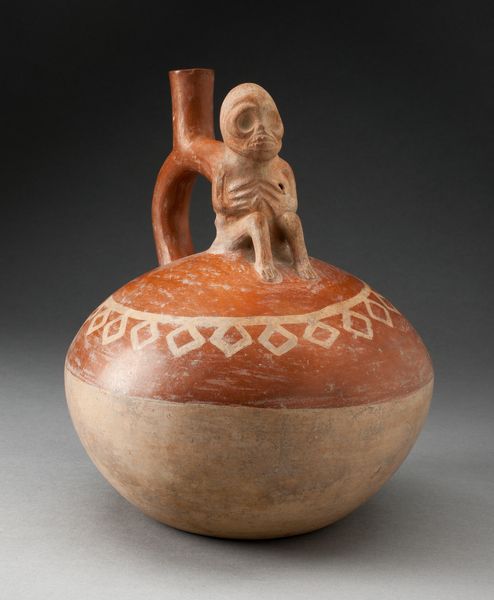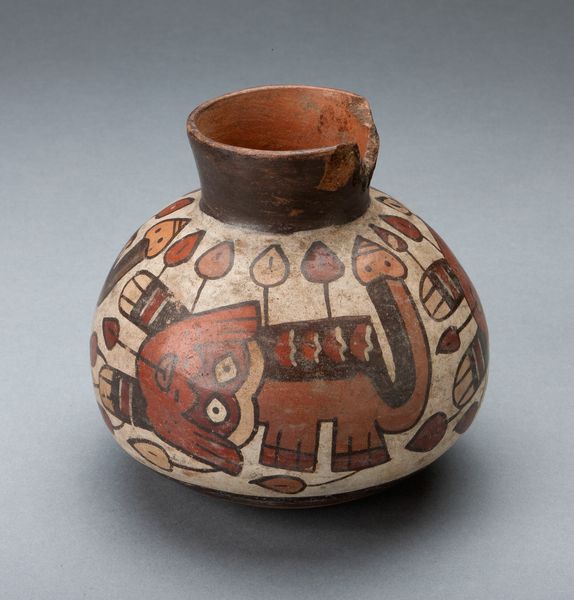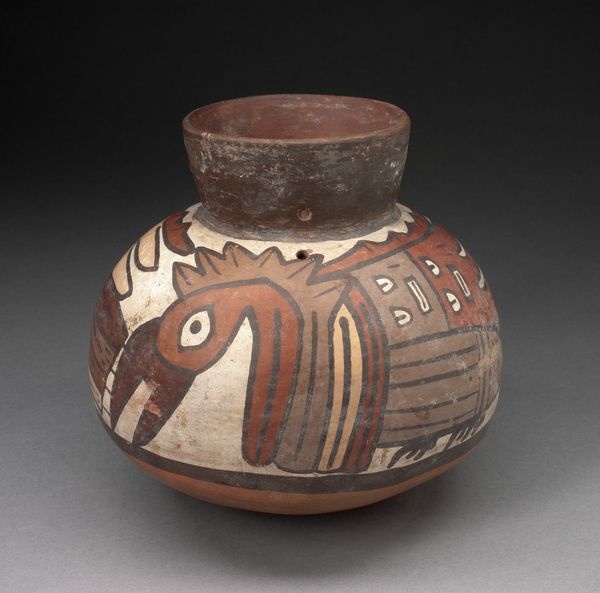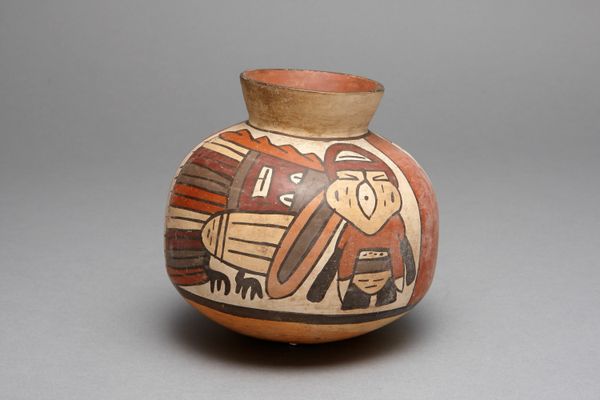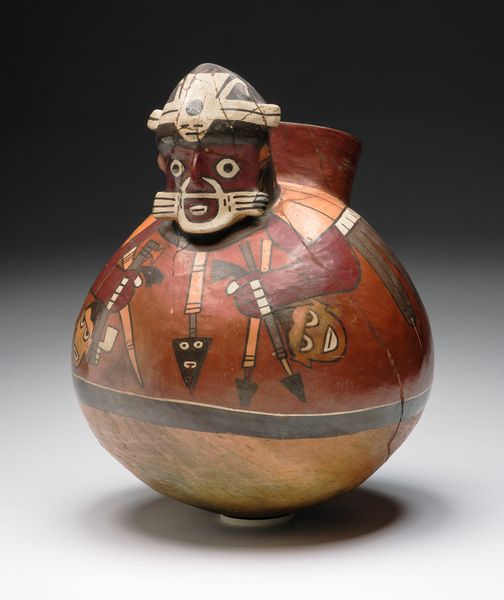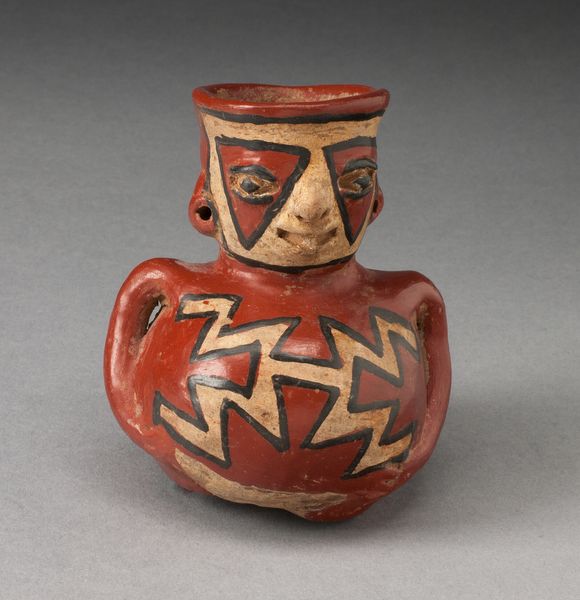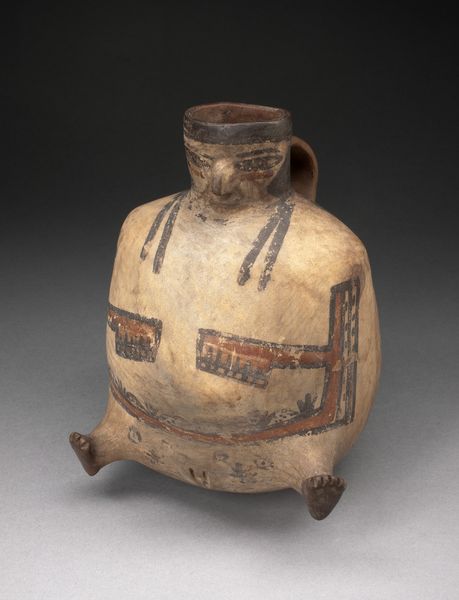
Stirrup Vessel in the Form of Figure with Abstract Motifs and Trophy Heads on Torso c. 180 - 500
0:00
0:00
ceramic, terracotta
#
ceramic
#
figuration
#
ceramic
#
terracotta
#
indigenous-americas
Dimensions: 19.8 × 14.6 cm (7 13/16 × 5 3/4 in.)
Copyright: Public Domain
Curator: Here we have a remarkable piece: a Nazca stirrup vessel, dating from about 180 to 500 CE, crafted in ceramic. It’s entitled “Stirrup Vessel in the Form of Figure with Abstract Motifs and Trophy Heads on Torso.” Editor: My immediate impression is the tactile quality of the fired clay. It’s visually grounded and quite expressive, despite the rather simplified figuration. I'm curious about the labor involved. Curator: Absolutely. The forming and firing process speaks to sophisticated understanding of materials and the technology required to achieve this level of artistry. The smooth surface and precise painting reveal exceptional skill. Editor: And what's striking is how the abstract motifs, presumed trophy heads and the human form seem intrinsically linked to the ceramic vessel itself. The surface isn't merely decorated; it becomes an integral part of the narrative. Was it built in modules perhaps? Curator: That interplay of figure and form creates a powerful visual language. Notice how the geometric patterns and abstracted figures create rhythm and balance, yet hint at complex symbolic meanings. The artist has skillfully created dynamic tension. I imagine that this vessel represents a key Nazca figure or mythological being. Editor: Indeed. We must consider the materiality of those abstracted forms – they are all tied to labor: the mining of pigments, the gathering of resources for firing. The fact that trophy heads are alluded to certainly offers some context as well – some insight to violent times that would affect ceramic-making societies deeply. What are the known sites of where such vessels were created, fired, and utilized? Curator: The vessel's provenance suggests it played a ritualistic, perhaps even socio-political, role. Vessels such as these often accompany burials in the Nazca region of Peru and represent the cyclical nature of life and death as it was practiced then. The stirrup handle, the effigy, and the decorative imagery seem intrinsically interconnected to their views of power and transformation. Editor: Thinking about that connection – the materials and the cyclical use to celebrate or memorialize people– brings it all together. A ceramic vessel, so simple and grounded, yet a symbol of a more complicated and brutal reality of conquest. It transcends utilitarian object into a profound cultural artifact. Curator: Precisely. Viewing the formal aspects combined with a keen sensitivity to that era enables us to appreciate the brilliance embedded in such deceptively simple ceramic forms.
Comments
No comments
Be the first to comment and join the conversation on the ultimate creative platform.

